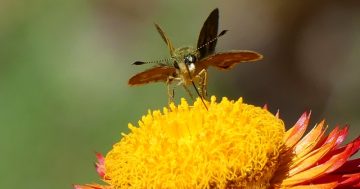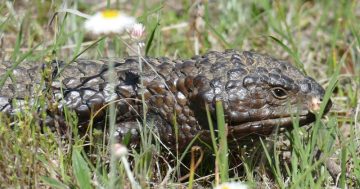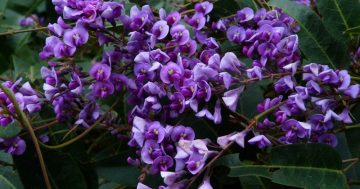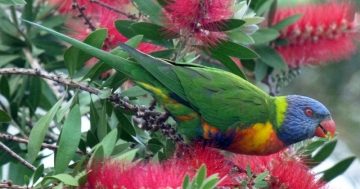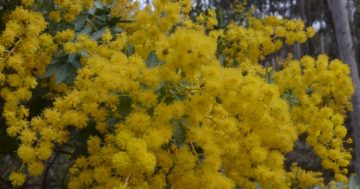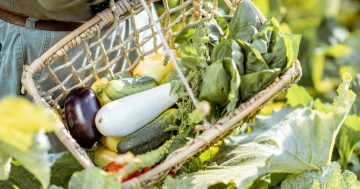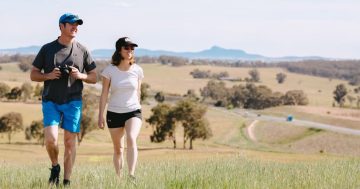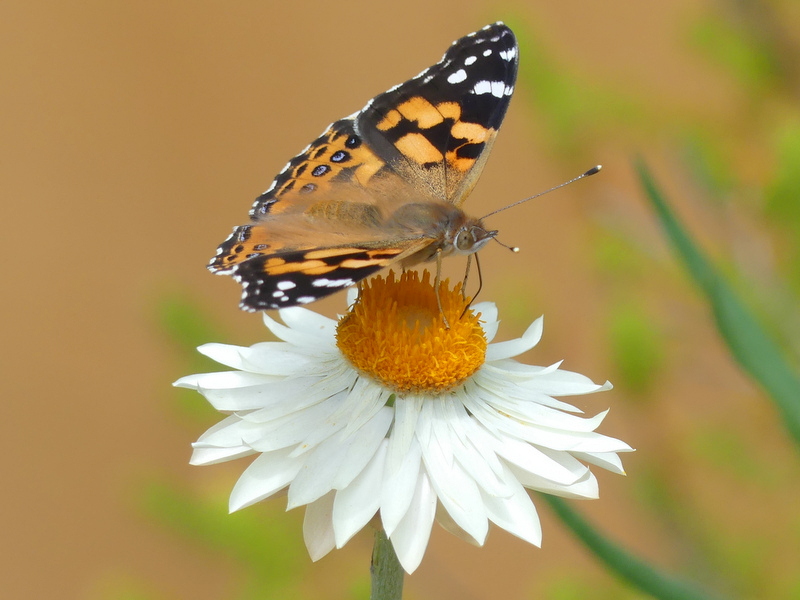
Australian Painted Lady sipping nectar from a paper daisy though its proboscis, dipping down between its front legs. Photo: Ian Fraser.
Paper daisies, or everlastings, are among the great pleasures of summer throughout much of Australia, so it seems odd to be writing about them in the depths of a cold grey winter.
However our little backyard is currently lit up by a couple of tall robust plants that began flowering in January and are still cheerfully putting out fresh flowers even now.
Every time we go into the yard, or even look out the kitchen window, there they are, brightening the yard and our lives. Others are probably having the same joyous experience, so this is as good a time as any to celebrate them.
Daisies are found in every unfrozen continent, and form the largest family of plants in the world with 24,000 species. There are more than 1000 Australian native species and hundreds more growing as weeds, including familiar ones such as thistles, Cape Weed, dandelions and Boneseed Daisy at the coast.
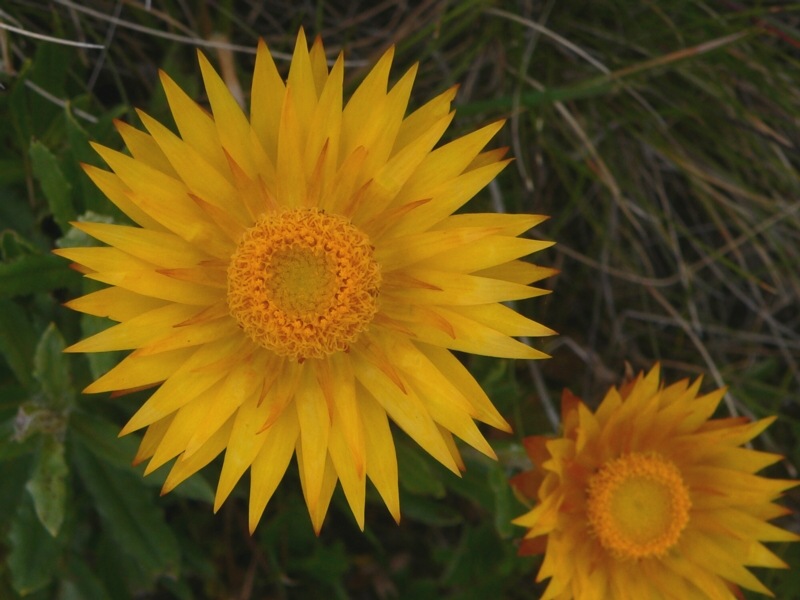
Alpine Everlastings in Namadgi National Park. The numerous central fertile florets are surrounded by stiff shiny papery bracts to draw attention to the flowers. Photo: Ian Fraser.
Some daisies’ products we eat, including artichokes, lettuces and sunflowers, and others we grow for flowers including chrysanthemums, dahlias, marigolds – and our paper daisies of course.
At the right time of year, or in good seasons, native daisies carpet hundreds of square kilometres of the high alps, the deserts and woodlands across southern Australia.
The amazing displays of the Western Australian sandplains are justly famous, but don’t underestimate the spectacular displays in the high Brindabellas of Namadgi National Park or the Snowys in summer.
One of the things that intrigues me about daisies is that the daisy ‘flower’ is actually a hoax – it’s not really a flower at all, but a collection of numerous tiny flowers (florets) clustered together to look like a single large flower. Look closely and you can see this quite clearly; the accompanying photos also make this obvious.
The basic daisy form is a simple sphere of florets. Some, like dandelions or many familiar native bushland daisies, add a ring of ‘petals’ which are actually sterile florets whose sole purpose is to attract the attention of pollinating insects to the central fertile florets – just like a single real flower.
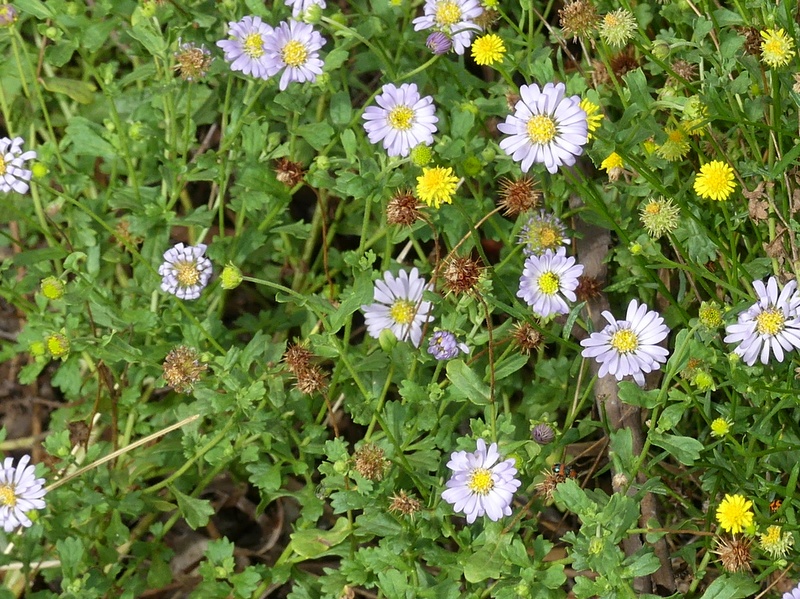
Two species of burr daisies, with the burrs ripening and awaiting your socks to carry them far away. Photo: Ian Fraser.
Others, like our paper daisies, instead use stiff shiny modified leaves, or bracts, to advertise their wares to insects. Curiously, and luckily for us, after the flowering has finished and the pollinated florets have dried and been replaced by seeds, these shiny papery bracts remain on the plant long after their task has been completed.
And there’s no doubt these strategies are successful – 24,000 daisy species can’t lie! Watch paper daisies and you’ll see a constant parade of butterflies, moths, flies, wasps and beetles coming to them.
For a butterfly or moth it’s just perfect; it can stand in one place and move its ‘straw’ (formally a proboscis) from floret to floret, getting a small fizz of sweet energy from each, without having to change position.
But there’s another secret to daisies’ success. When I was a child in Adelaide many years ago, a feature of summer was the clouds of ‘Father Christmases’ sailing across the sky in front of a hot northerly wind.
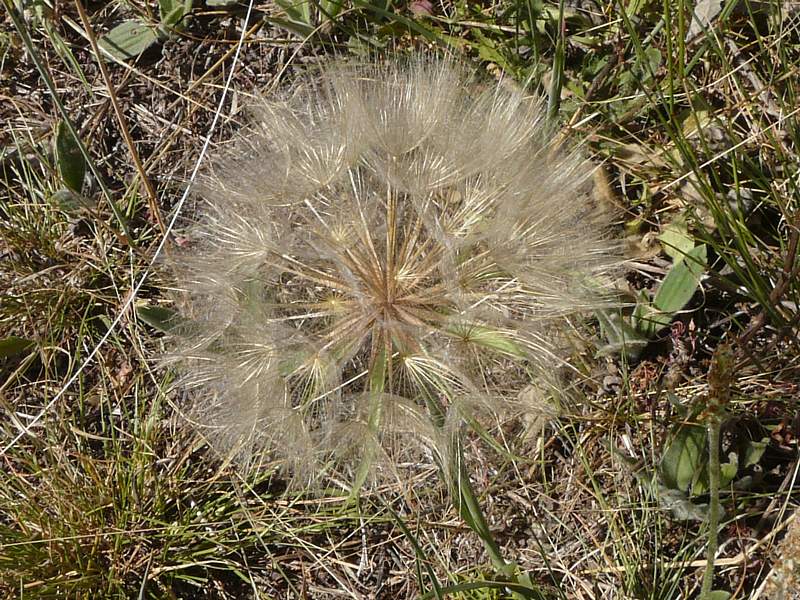
An introduced salsify, with feathery ‘parachutes’ which will each carry a seed away on the wind. Photo: Ian Fraser.
They were feather-light parachutes formed from the dried flowers of Scotch Thistles, each carrying one seed but overall spreading millions of thistle seeds across the country (and fortunately for us, out to sea for many of them).
This is not the only daisy strategy for dispersing seeds though. Many species have sticky or spiny burrs designed to stick to fur or feathers, though it turns out they work just as well on socks too!
Daisies are both beautiful and fascinating – enjoy!
Ian Fraser is a naturalist, conservationist and author. He has written on all aspects of natural history, advised the government on biodiversity and published multiple guides to the region’s flora and fauna.
Original Article published by Ian Fraser on Riotact.







